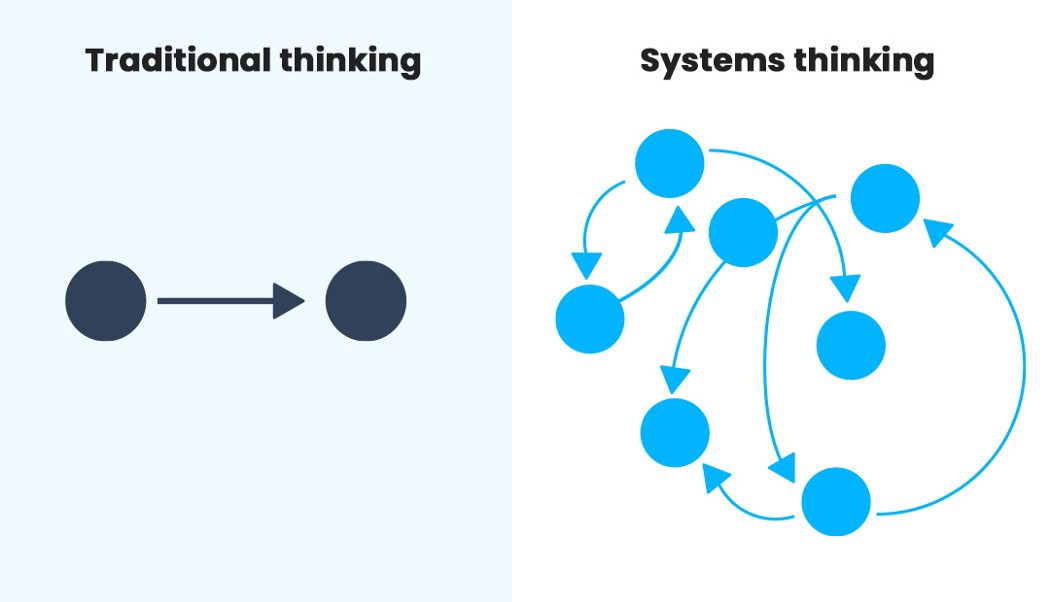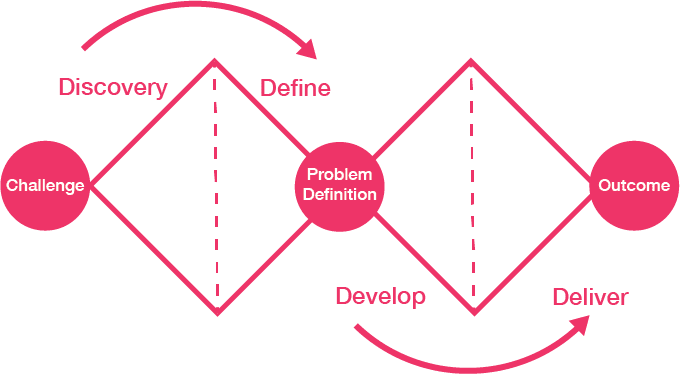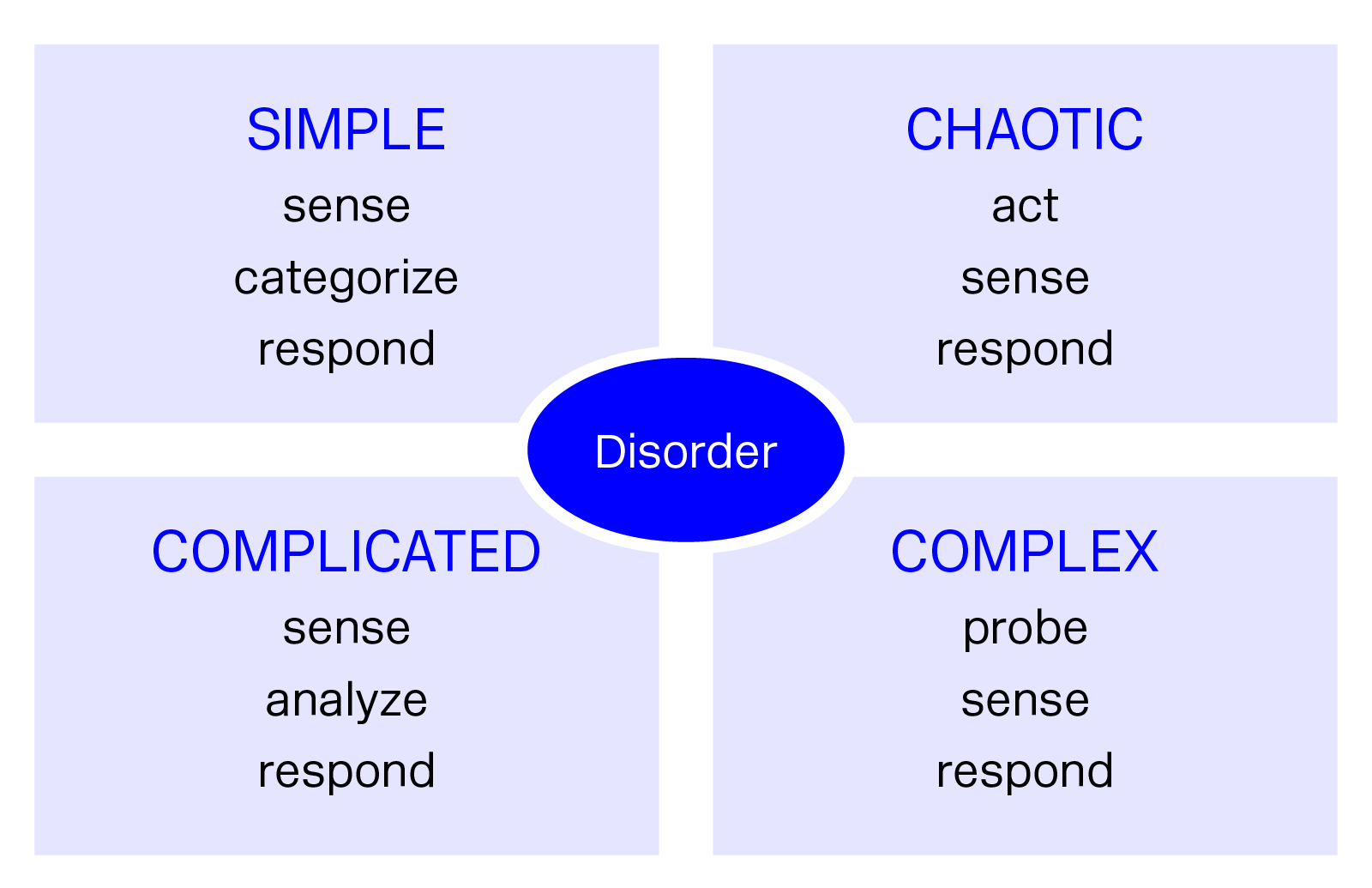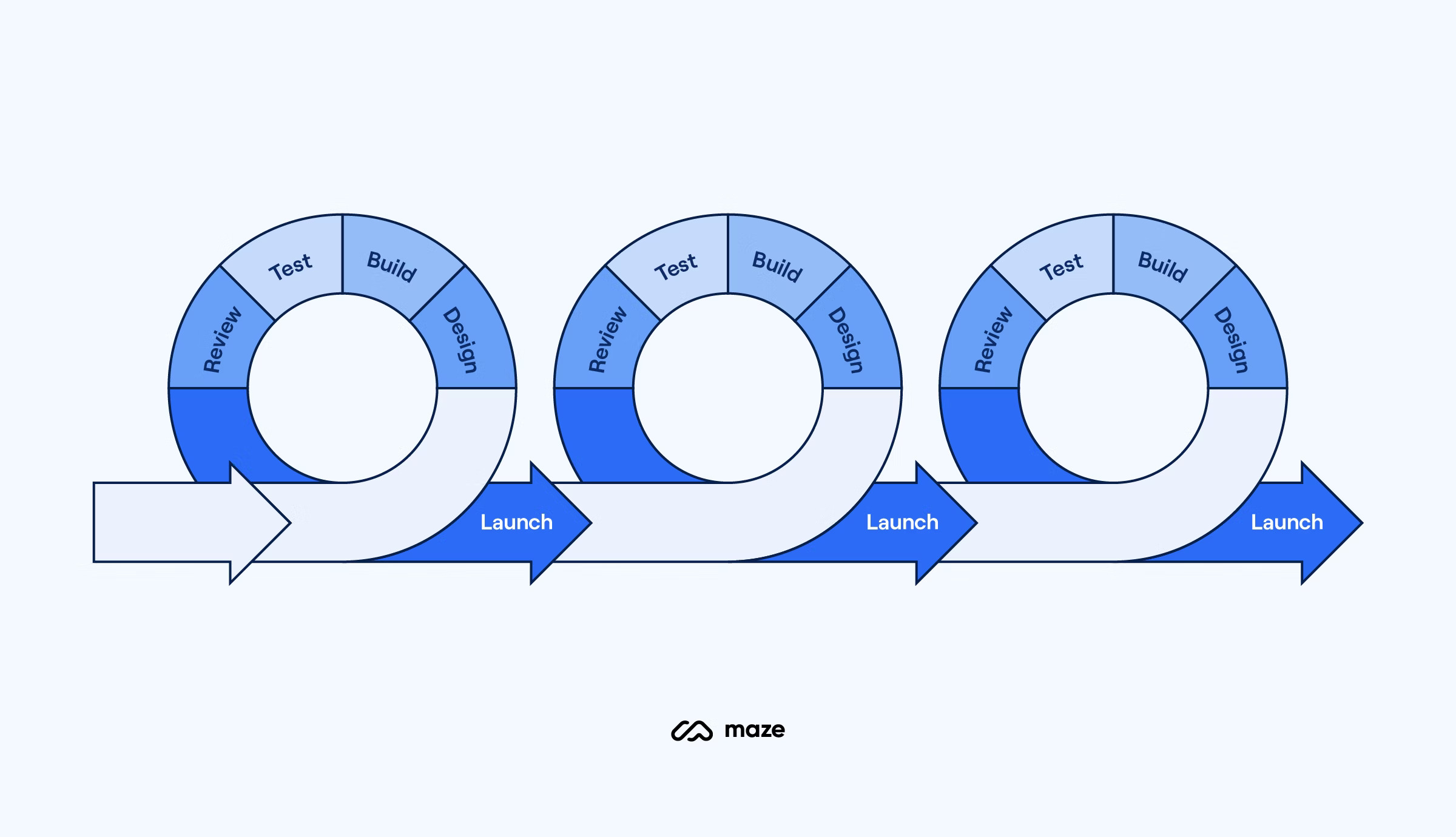
Design Thinking and Organisational Problem-Solving: Frameworks and Techniques
Design thinking is a powerful problem-solving approach that focuses on understanding and empathising with the needs and challenges of users or customers. It combines creative and analytical thinking to develop innovative solutions that meet the needs of the people who use them.
In business, design thinking can be used in solving organisational problems to address complex issues and effect meaningful change. This involves a deep understanding of the problem, developing multiple potential solutions, and rapidly prototyping and testing those solutions to determine the most effective one.
There are several frameworks and techniques that can be used in design thinking to guide the problem-solving process. This article explores some of these approaches and discusses how they can be applied to problem-solving within an organisation.
What exactly is design thinking?
Design thinking is a problem-solving approach that involves understanding and empathising with users, defining the problem, ideating potential solutions, prototyping and testing. It is a people-centred approach to innovation that focuses on creating solutions that meet the needs and desires of users rather than focusing solely on the technical or business aspects of a problem.
In the context of an organisation, design thinking can be applied to various challenges, from product development to customer service to organisational culture. For example, a company could use design thinking to improve the customer experience on its website.
By empathising with customers and understanding their pain points, the company can identify opportunities for improvement and prototype potential solutions. These solutions could include redesigning the website’s layout, simplifying the checkout process or using a chatbot to help customers with questions.
How is design thinking beneficial to organisational problem-solving?
Design thinking has become increasingly important in solving business problems due to its focus on user-centred solutions and its ability to drive innovation. By understanding the needs and perspectives of users, companies can develop products or services that better meet their needs and wants.
A practical example of the importance of design thinking in solving organisational problems is the redesign of the emergency department at Stanford Hospital.
Through Design Thinking, the hospital was able to identify and address patients’ unmet needs, such as the desire for regular communication and coordination between care providers. Design thinking helped the hospital to empathise with its patients and understand their needs, which led to an improvement in patient satisfaction.
Another example is Nest’s development of the Nest Thermostat. The company used design thinking to understand consumers’ problems and needs when it comes to controlling the temperature in their homes. By developing a user-friendly, elegant and internet-connected thermostat, Nest was able to revolutionise the home heating and cooling market and help save around 1 billion kWh in the United States.
These examples show that design thinking has the potential to create innovative solutions to complex problems that improve the customer experience and a company’s bottom line.
Design thinking processes for tackling complex problems
Design thinking can be used to tackle complex problems in organisations. The process typically involves five iterative stages:
- Empathise: This technique is about understanding the needs and perspectives of stakeholders such as customers, users or employees through observation and research. By empathising with stakeholders, organisations can gain insights into their challenges and problems and use this knowledge to develop solutions that meet their needs.
- Define: In this step, the problem is identified and framed in a way that makes it specific and actionable. This involves breaking the problem into smaller, manageable parts and defining the key issues that need to be addressed.
- Ideate: In this phase, brainstorming and other creative techniques are used to develop a wide range of potential solutions. The aim is to generate as many ideas as possible without assessing their feasibility or practicality.
- Prototype: In this step, prototypes of potential solutions are quickly created and tested. This can be done through physical models, mock-ups or even rough sketches. Prototyping allows ideas to be tested and refined in a low-risk, low-cost way and can help identify the strengths and weaknesses of different solutions.
- Test: The prototype is refined and tested with stakeholders in this final step. By gathering feedback and iterating the prototype, organisations can improve the solution until it meets stakeholder requirements and is ready for implementation.
Design thinking frameworks for organisational problem-solving
“Design can help to improve our lives in the present. Design thinking can help us chart a path into the future.” — Tim Brown. Some popular design thinking concepts that organisations can use to approach problem-solving includes:
#1. The Lean Startup approach and its focus on rapid experimentation and iteration

The lean startup methodology. Image via Sprints&Sneakers
This framework, developed by Eric Ries, focuses on rapid experimentation and iteration to quickly test and validate hypotheses about customer needs and business models. The goal of the lean startup approach is to develop a minimum viable product (MVP) — a product with just enough features to satisfy early customers — and then iterate based on customer feedback.
This approach is instrumental in fast-moving or highly uncertain environments, as it allows companies to adapt quickly to changing customer needs and market conditions.
An example of the lean startup approach in practice is the development of the Airbnb platform. The founders of Airbnb used the lean startup method to test and improve their concept quickly. They started with a simple website that allowed users to book a spare room in someone’s home.
They then gathered feedback and refined the product until they could eventually rent entire houses and apartments. By applying the lean startup approach, Airbnb validated its market and quickly developed into the successful platform it is today.
#2. The Systems Thinking framework and its emphasis on understanding the interconnectedness of a problem

Systems thinking illustration. Image via UX Collective
This framework is based on the idea that complex problems are interconnected and cannot be considered in isolation. Systems thinking aims to understand the relationships between the different parts of a system and how they contribute to the overall problem.
This may involve creating diagrams or models to visualise the system or using tools such as root cause analysis to identify the underlying causes of the problem.
For example, a company struggling with low employee morale could use systems thinking to understand the root causes of the problem. This could involve looking at factors such as the company culture, communication processes and leadership style to understand how these factors contribute to the overall problem.
#3. The double Diamond structured problem-solving framework

The double diamond model. Image via Michael Gearson
This framework, developed by the British Design Council, is based on the idea that the design process comprises two divergent and convergent phases. In the divergent phase, a wide range of ideas and potential solutions are developed. These ideas are refined and narrowed down to a final solution in the convergent phase.
An example of how the double diamond framework can be used to solve problems in organisations is the development of a new marketing campaign.
In the “discover” phase, the company might develop various ideas for the campaign, such as social media contests, partnerships with influencers or targeted advertising. In the “define” phase, the company can narrow down the ideas based on their potential impact, cost and alignment with business objectives.
Using the double diamond framework, the company can identify and focus on the most promising ideas for the campaign.
#4. The Cynefin framework and its approach to categorising problems into domains

The Cynefin framework. Image via DMEXCO
This framework, developed by Dave Snowden, is based on the idea that problems can be categorised into different domains based on their complexity. The Cynefin framework divides problems into five domains: simple, complicated, complex, chaotic and disordered.
Each domain requires a different problem-solving approach, and it is crucial to understand which domain a problem falls into to choose the most appropriate approach.
For example, a company faced with a simple problem, such as a mechanical failure on a production line, might solve the problem with a straightforward cause-and-effect approach.
On the other hand, a company faced with a complex problem, such as changing consumer preferences, might take a more iterative and experimental approach to understand the problem and find solutions.
#5. The Agile framework for iterative and incremental product development

The agile methodology. Image via Maze
This framework is based on the idea of iterative and incremental product development, with an emphasis on flexibility and adaptability. In the agile approach, a project is divided into smaller sections or iterations, and working products are delivered at the end of each iteration.
This way, companies can quickly adapt to changing customer needs and market conditions and respond to feedback in real time.
For example, a company developing a new software product could use the agile framework to deliver a working version of the product at the end of each iteration and collect user feedback to refine and improve the product.
Following this process, the company can respond quickly to changing customer needs and ensure that the final product meets their requirements.
Related reading: Revolutionizing Your Workplace: The Power of Design Thinking
What roles do leaders play in fostering a design thinking culture?
Leaders play a crucial role in fostering a culture of design thinking within an organisation. Design thinking requires a change in mindset and approach to problem-solving, and leaders can help create an environment that encourages and supports this change.
Here are some ways in which this can happen:
- Lead by example: Leaders can demonstrate their commitment to design thinking by adopting the approach and encouraging others to do the same. This can be done by attending design thinking workshops or training or incorporating design thinking into their daily work.
- Encourage collaboration and open-mindedness: Design Thinking is based on collaboration and inputs from diverse perspectives. Leaders can encourage this by fostering an open and inclusive culture that values the ideas and contributions of all team members.
- Support experimentation and iteration: Design thinking involves rapid prototyping and testing potential solutions. Leaders can support this by providing resources and time for experimentation and iteration and fostering a continuous learning and improvement culture.
- Encourage a customer-centric mindset: Design thinking focuses on understanding the needs and perspectives of customers (or users). Leaders can foster this mindset by regularly soliciting customer feedback and incorporating it into decision-making.
By adopting these practices, leaders can create a culture that supports and encourages design thinking in solving organisational problems.
Take the next step
Design thinking is a powerful approach to problem-solving that can drive innovation and improve customer experiences. By using techniques and frameworks such as empathy mapping, rapid prototyping and the lean startup method, companies can tackle complex problems creatively and effectively.
If you are interested in introducing design thinking into your business, you should sign up for our Design Thinking and Product Innovation training programme. Our experienced team of instructors will guide you through the design thinking process and help you apply it to your business challenges.










